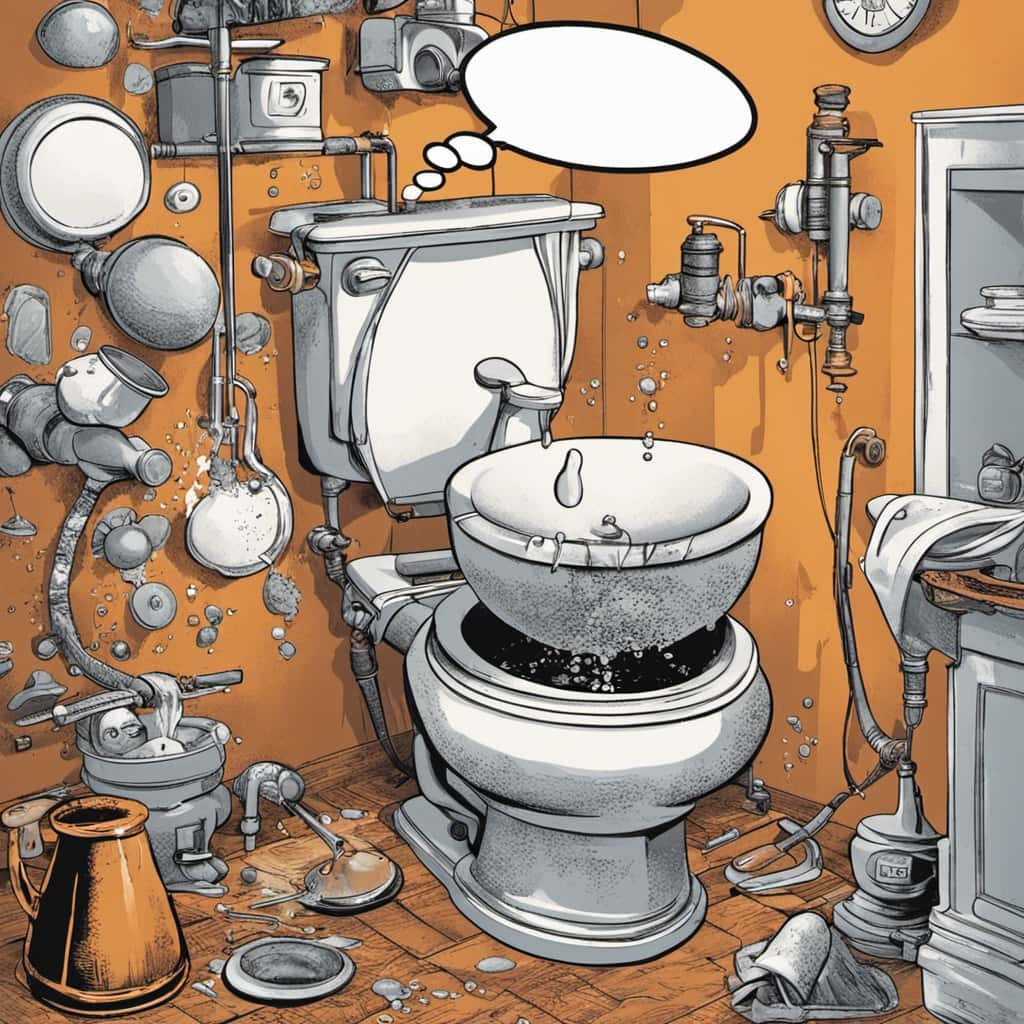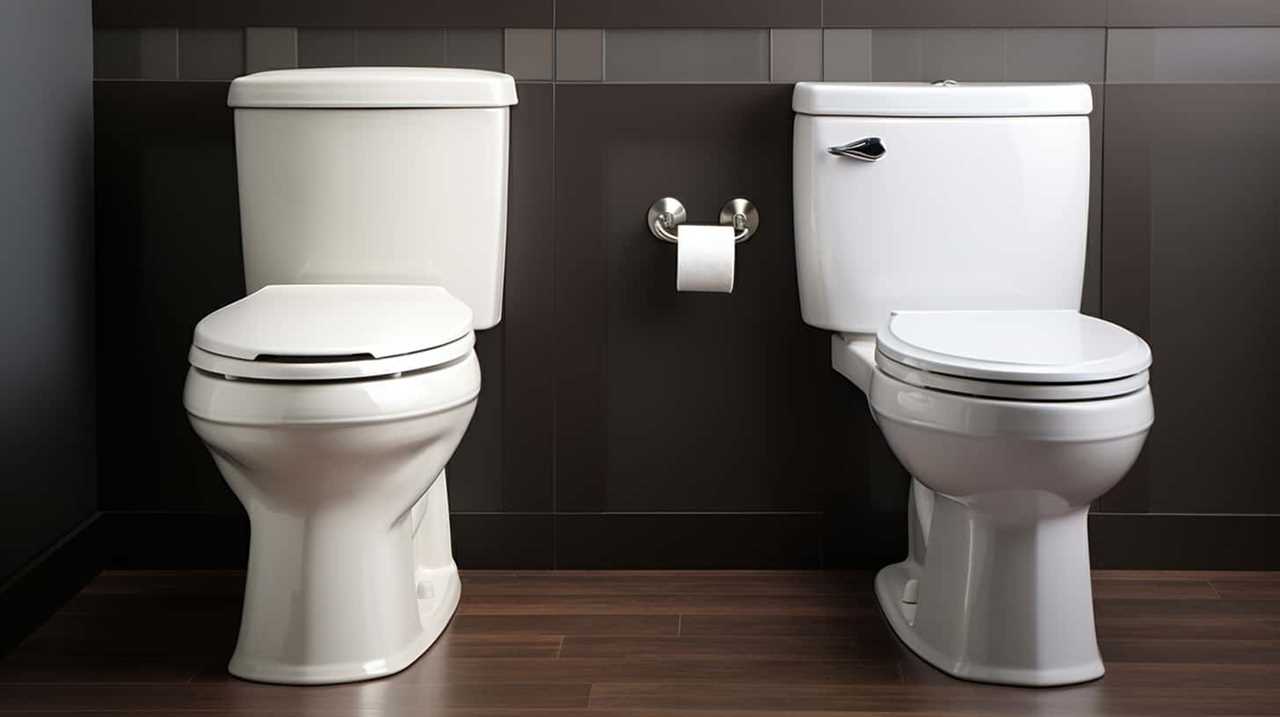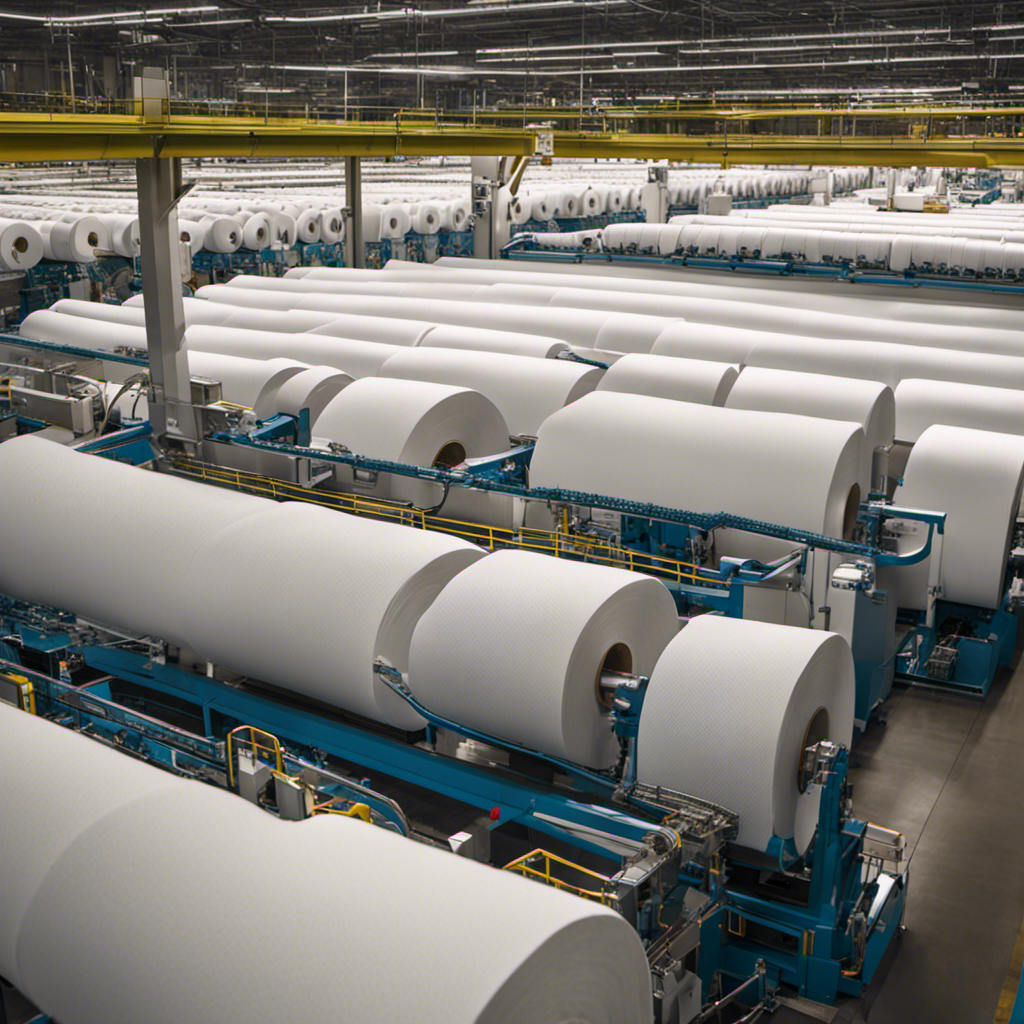In our quest for the ultimate RV experience, we often overlook the significance of a seemingly mundane element: water in the toilet bowl. But believe it or not, this small detail can make a world of difference.
In this article, we will explore the importance of maintaining water in your RV toilet bowl, weighing the pros and cons, and providing tips on conserving water.
Get ready to make an informed decision for your RV toilet, because every drop counts.
Key Takeaways
- Water in the RV toilet bowl aids in the effective removal of waste and prevents residue from sticking to the surface.
- Keeping water in the bowl helps to prevent odors from escaping and spreading, and reduces the risk of clogs by flushing solid waste down the drain.
- Water in the bowl breaks down toilet paper and prevents accumulation in the pipes, promoting a cleaner and healthier environment.
- Conserving water in the RV toilet bowl can be achieved by minimizing flushes, utilizing water-saving devices, and considering the switch to a dry toilet if desired.
Importance of Water in RV Toilet Bowl
The presence of water in the RV toilet bowl is crucial for maintaining proper sanitation and preventing odors. It plays a vital role in the overall cleanliness and functionality of the toilet system.

One of the primary reasons why water is important is because it helps in the effective removal of waste. When water is present in the bowl, it aids in flushing down the waste and preventing any residue from sticking to the surface.
Regular cleaning of the toilet bowl is also essential to ensure hygiene and prevent the buildup of bacteria and germs. Proper maintenance, including keeping the bowl filled with water, can help prevent clogs and ensure the smooth operation of the toilet system.
Therefore, it’s imperative to prioritize the importance of cleaning and maintenance to ensure a clean and odor-free RV toilet experience.
Pros of Keeping Water in RV Toilet Bowl
Maintaining water in the RV toilet bowl offers several benefits for optimal sanitation and functionality.

One of the key advantages of keeping water in the bowl is that it helps to prevent odors from escaping and spreading throughout the RV. The water acts as a barrier, sealing off any unpleasant smells from the waste tank.
Additionally, having water in the bowl helps to ensure that solid waste is properly flushed down the drain, reducing the risk of clogs and blockages. This is especially important when using toilet paper, as the water helps to break it down and prevent it from accumulating in the pipes.
Lastly, the presence of water in the bowl helps to create a more comfortable and hygienic experience for users, promoting a cleaner and healthier environment.
Cons of Keeping Water in RV Toilet Bowl
Continuing with water in the RV toilet bowl, one drawback is the potential for increased water consumption. Keeping water in the bowl means maintaining a certain water level at all times, which can lead to more water being used with each flush. This can be a concern for RV owners who are conscious of their water usage and want to conserve as much as possible.

Additionally, having water in the bowl can also raise hygiene concerns. Stagnant water in the bowl can become a breeding ground for bacteria and unpleasant odors. It requires regular cleaning and maintenance to ensure proper hygiene levels. Some RV owners may find this added responsibility burdensome and prefer to keep the bowl dry to avoid potential hygiene issues.
Tips for Conserving Water in RV Toilet Bowl
To conserve water in our RV toilet bowl, we can implement a few simple tips:
- Minimize Flushes
- Flush only when necessary to reduce water usage.
- Utilize the ‘If it’s yellow, let it mellow; if it’s brown, flush it down’ rule when appropriate.
- Use Less Water per Flush
- Install a low-flow toilet or a water-saving device to reduce the amount of water used per flush.
- Adjust the water level in the toilet tank to a lower setting.
Conserving water in the RV toilet bowl is crucial for a sustainable and efficient water management system. By minimizing unnecessary flushes and using less water per flush, we can significantly reduce water consumption. Installing low-flow toilets or water-saving devices further enhances water conservation efforts. Adjusting the water level in the toilet tank to a lower setting ensures that only the necessary amount of water is used.
These simple tips not only save water but also contribute to a more eco-friendly RV lifestyle.

Conclusion: Making the Decision for Your RV Toilet
Now, let’s consider our options and make a decision for our RV toilet.
When it comes to making the switch between dry and wet RV toilets, there are a few factors to consider. Dry toilets, also known as composting toilets, don’t require water in the bowl and use a natural decomposition process to break down waste. They’re eco-friendly and can conserve water.
On the other hand, wet toilets use water in the bowl to flush waste into a holding tank. The water level in RV toilets is an important aspect to consider. It should be high enough to ensure efficient flushing but not too high to risk overflow or excessive water usage.
Finding the right balance of water levels in RV toilets is essential for functionality and water conservation. Ultimately, the decision between dry and wet toilets and the water levels in the bowl will depend on personal preference, convenience, and environmental considerations.

Frequently Asked Questions
How Often Should I Refill the Water in My RV Toilet Bowl?
Refilling the water in our RV toilet bowl is necessary for proper waste disposal. The type of water used can affect its performance. We should regularly check and refill the bowl to maintain optimal function.
Can I Use Alternative Liquids Instead of Water in My RV Toilet Bowl?
Using alternative liquids in an RV toilet bowl is not recommended. Water is essential for proper function and odor control. It creates a seal and helps break down waste. Stick to using water for optimal performance.
Are There Any Health Risks Associated With Not Having Water in the RV Toilet Bowl?
Without water in the RV toilet bowl, the importance of proper ventilation cannot be overstated. Lack of water hampers odor control, leading to potential health risks and unpleasant experiences.
What Are Some Common Mistakes to Avoid When Using an RV Toilet With Water in the Bowl?
Common troubleshooting tips for using an RV toilet with water in the bowl include ensuring proper water levels, avoiding excessive use of toilet paper, and regularly maintaining the toilet to prevent clogs and odors.

Can I Use Additives or Chemicals to Keep the Water in My RV Toilet Bowl Clean for Longer Periods?
Using additives or chemicals in the RV toilet bowl to keep the water clean for longer periods has its pros and cons. However, water conservation should also be considered, and alternative options can be explored.
Conclusion
In conclusion, the decision of whether to keep water in the RV toilet bowl ultimately depends on personal preference and water conservation goals. While keeping water in the bowl can help prevent odors and promote better waste breakdown, it may also lead to increased water usage.
By following some simple tips for conserving water, RV owners can strike a balance between functionality and sustainability. So, whether you choose to keep water in the bowl or not, make sure it aligns with your specific needs and values.
Let your RV toilet be a reflection of your unique camping experience.











